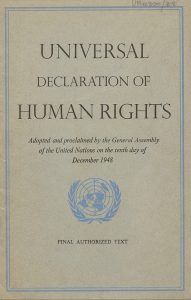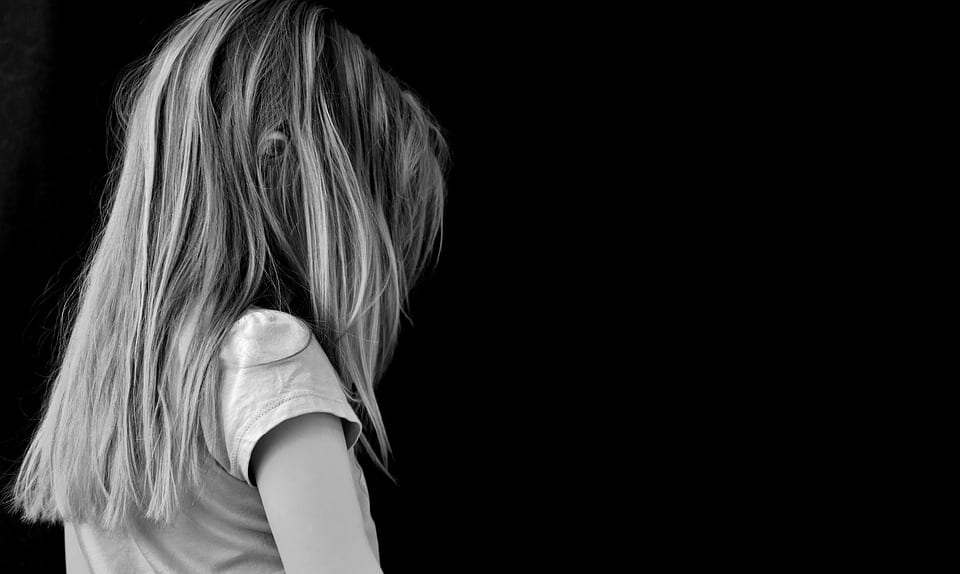Surprisingly, in 30% of the countries which provided information on the gender of traffickers, women make up the largest proportion of traffickers.
Human trafficking is an open violation of human dignity, and also exploitation of International Human Rights Law. A trade, business that is considered to be one controversial topic for many countries, it takes place worldwide for the purpose of gaining money out of it, it has been giving a major profit to the traffickers. This “business” involves sexual slavery, forced labor, prostitution, child abuse, and commercial exploitation as well. Many children and women have been exploited in such a way to sell their bodies without their consent. They are also trafficked for labor exploitation, which is violence of labor dignity as well. According to the UNODC Report, the most common form of human trafficking (79%) is sexual exploitation. The victims of sexual exploitation are predominantly women and girls.
Surprisingly, in 30% of the countries which provided information on the gender of traffickers, women make up the largest proportion of traffickers. In some parts of the world, women trafficking women is the norm. The second most common form of human trafficking is forced labor (18%), although this may be a misrepresentation because forced labor is less frequently detected and reported than trafficking for sexual exploitation. Worldwide, almost 20% of all trafficking victims are children. However, in some parts of Africa and the Mekong region, children are the majority (up to 100% in parts of West Africa).
The Universal Declaration of Human Rights contains two articles that specifically refer to children. Article 25(2) states:

“Motherhood and childhood are entitled to special care and assistance. All children whether born in or out of wedlock shall enjoy the same social protection. ”
Article 26 calls for the right to education for all, and deals both with access to and the aims of education. Thus, education is to be free, at least in the elementary and fundamental stages; elementary education is to be compulsory; and education should be “directed to the full development of the human personality and to the strengthening of respect for human rights and fundamental freedoms.” Nevertheless, “Parents have a prior right to choose the kind of education that shall be given to their children.”
The article states the protection of liberty, choice, right to secure and safe life of children and how important this is for them to have social protection, it’s a social responsibility of community to protect children from any form of exploitation as it is violation of child protection laws and exploitation of mental life of any individual. Sexual exploitation can result in trauma that may impact children for the rest of their lives. In the modern world, nearly 1 in 10 children are subjected to child labor worldwide without their consent and traffickers make business out of this exploitation. Mostly this happens when the families of children face financial crisis, they push them towards labor. They sell them to traffickers as well, in order to overcome poverty. Migrant and refugee children – many of whom had been uprooted with the aid of struggle, catastrophe or poverty – additionally risk being forced into work or even trafficked, mainly if they’re migrating on their own or taking irregular routes with their households. Trafficked children are frequently subjected to violence, abuse and other human rights violations, and some may be forced to interrupt the law. For ladies, the threat of sexual exploitation looms large, while boys can be exploited by way of defense force or organizations.
The trafficking in children – internally in countries, throughout countrywide borders and across continents – is intently interlinked with the call for cheap malleable and docile labor in sectors and amongst employers where the working situations and the treatment grossly violates the human rights of the kids. These are characterized by environments which might be unacceptable (the unconditional worst bureaucracy) in addition to being dangerous to the fitness and the improvement of the kid (risky worst paperwork). Those forms vary from bonded labor, camel jockeying, baby home labor, industrial sexual exploitation and prostitution, drug couriering, and toddler soldiering to exploitative or slavery-like practices within the casual commercial zone.
Human trafficking is a human rights violation that frequently includes bodily or mental violence, rape, kidnapping and enslavement. It’s also an extreme crime, most often global, for which it’s punishable in Poland and different countries of the European Union.
The Criminal Code says: “Anyone who commits human trafficking shall be subject to imprisonment for a maximum of 3 years. (Article 189A. § 1 of the Criminal Code).
Human trafficking, known as twenty first century slavery, is against the law of human freedom (chapter xxiii of the Criminal Code) of a conventional nature, prosecuted below international agreements to which Poland is a member. Until recently, this crime was located in a set of crimes in opposition to public order, which was modified by using the change of the criminal code and other legal guidelines of 20 May 2010, which got here into pressure on 8 September 2010, and that is an exchange in the right path because the essential right that trafficking offenders can interact in is the freedom of their sufferers. The current provision of Article 189A § 1 of the CC (previously 253 § 1 of the CC) is worded very clearly.
Anyone who commits trafficking in human beings is subject to imprisonment for a maximum of 3 years.
For girls and boys, a different sample became detected. Although (50%) many are also sufferers of sexual exploitation (27%) and different sorts of exploitation, which includes compelled begging, recruitment in troops and armed organizations and pressured criminal sports. The girls had been victims of sexual exploitation in 72% of the analyzed episodes. Instances of forced labor concerning underage girls accounted for 21% of the entirety. Most of the trafficked and identified people outside their place of foundation come from East Asia, followed through Sub-Saharan Africa. Despite the fact that there has been a boom inside the number of convictions for the crime of trafficking in each region, the UN have a look at concludes that large regions of impunity nevertheless exist on the African and Asian continents.
Myth: Only girls and women are sufferers of human trafficking
Fact: Boys and guys are simply as probable to be sufferers of human trafficking as women. But, they may be much less likely to be diagnosed and reported. Girls and boys are often concern to unique forms of trafficking, as an instance, girls can be trafficked for compelled marriage and sexual exploitation, at the same time as boys can be trafficked for compelled exertions or recruitment into armed businesses.
Myth: All human trafficking involves intercourse or prostitution
Fact: Human trafficking can include forced hard work, home servitude, organ trafficking, debt bondage, recruitment of children as child soldiers, and/or intercourse trafficking and pressured prostitution.
Myth: Trafficking involves traveling, transporting or transferring someone throughout borders.
Fact: Human trafficking isn’t the same thing as smuggling, though the two terms are normally confused. Trafficking does not require movement throughout borders. In truth, in a few cases, a toddler may be trafficked and exploited from their own home. In the U.S., trafficking frequently occurs at hotels, resorts, truck stops and online.
Myth: Humans being trafficked are physically not able to get away or held against their will
Fact: Trafficking can contain force, but people also can be trafficked through threats, coercion, or deception. People in trafficking situations may be managed via drug addiction, violent relationships, manipulation, lack of monetary independence, or isolation from circle of relatives or pals, similarly to bodily restraint or damage.
Myth: Trafficking typically takes place in developing countries
Fact: Trafficking takes place all around the world, although the maximum common forms of trafficking come from the U.S.A. The U.S.A is one of the most active sex trafficking countries in the world, where exploitation of trafficking victims takes place in towns, suburban and rural areas. Exertions trafficking occurs in the U.S.A., however at decrease rates than most growing countries.
The bad implementation of laws is the principle cause for toddler trafficking. The worst form of baby trafficking is child intercourse and it’s far an ongoing intense problem. The victims of this are generally compelled to work in brothels, strip clubs, and bars. The worst of those conditions is when they may be sold off to work in non-public houses and are a slave to the proprietors until they’re saved by using any person or find a manner to escape. Youngsters who are victims of trafficking experience numerous emotional, social, mental, and bodily consequences and these typically stay for a long time. Most of the children are sufferers of hysteria, despair, psychiatric disorders, trauma, and a number of the sex victims have one of a kind STDs. Later in lifestyles, a number of these children develop inclinations to become drug addicted or grow to be alcoholics. Youngsters from bad socio-economic and marginalized backgrounds are regularly trafficked. Most of the time, the parents are involved because of their extreme conditions. Dad and mom are typically one of the main reasons for trafficking as their negative circumstances force them to ship their kids in hopes for better lifestyles. The problem is that youngsters don’t understand what they are browsing and are unexpectedly fallen into that entice. Traffickers promise the parents with minimum salary and safe haven for the youngsters, however with the aid of tricking them they take the children away. Little girls are generally the foremost concern for the intercourse exchange and that is often the foremost unforgiving practice that oldsters are generally blind to or they promote their children to these traffickers.
Most of the time number one problems are drug troubles and money. The rush elements are unemployment, own family requirements and particularly the entire household lives in poverty. A variety of these poverty-bothered households are trapped in those high wages of baby trafficking. These youngsters aren’t simply traded within the U.S.A. Most of those youngsters are given the worst remedy known to mankind and are pressured to beg and steal. A lot of the time unlawful organ transplantation additionally takes place. The trafficked children are sexually and physically abused during their lifestyles till they’re deemed now not worthy or now not valued anymore. Quite a few the cases are involve children who are forcefully kidnapped and then deported to disgusting environments. Those environments could have a big impact on the growth and typical development of the child.
Extensive legal guidelines need to be put in place in order that youngsters have at the least a chance of being saved from baby trafficking. On an international stage, it is currently increasing at an alarming rate. There are many elements behind this kind of upward push. It is important that strict laws be applied in particular in developing nations so that those children living underneath the poverty line have a chance to have a better life.


Join the conversation!